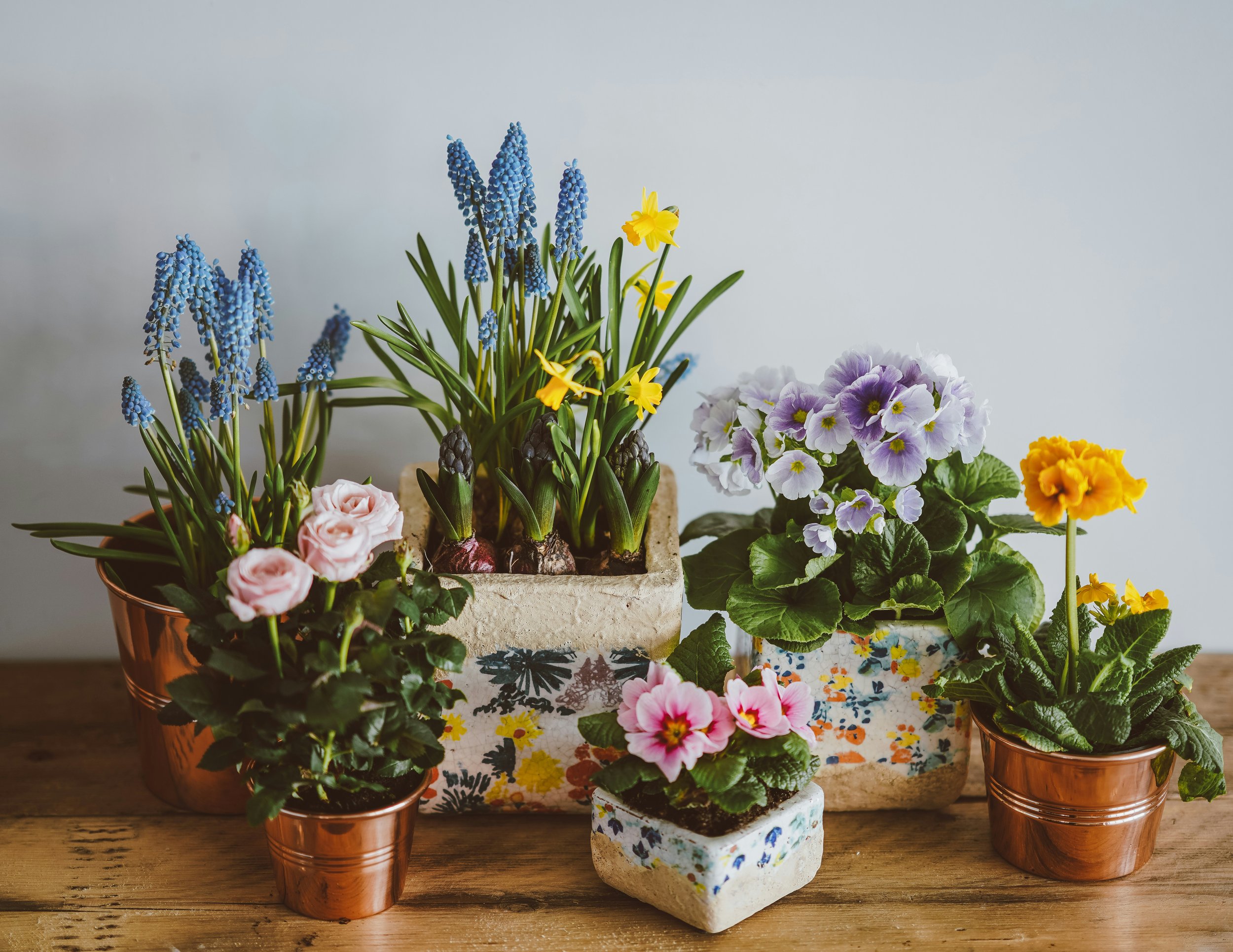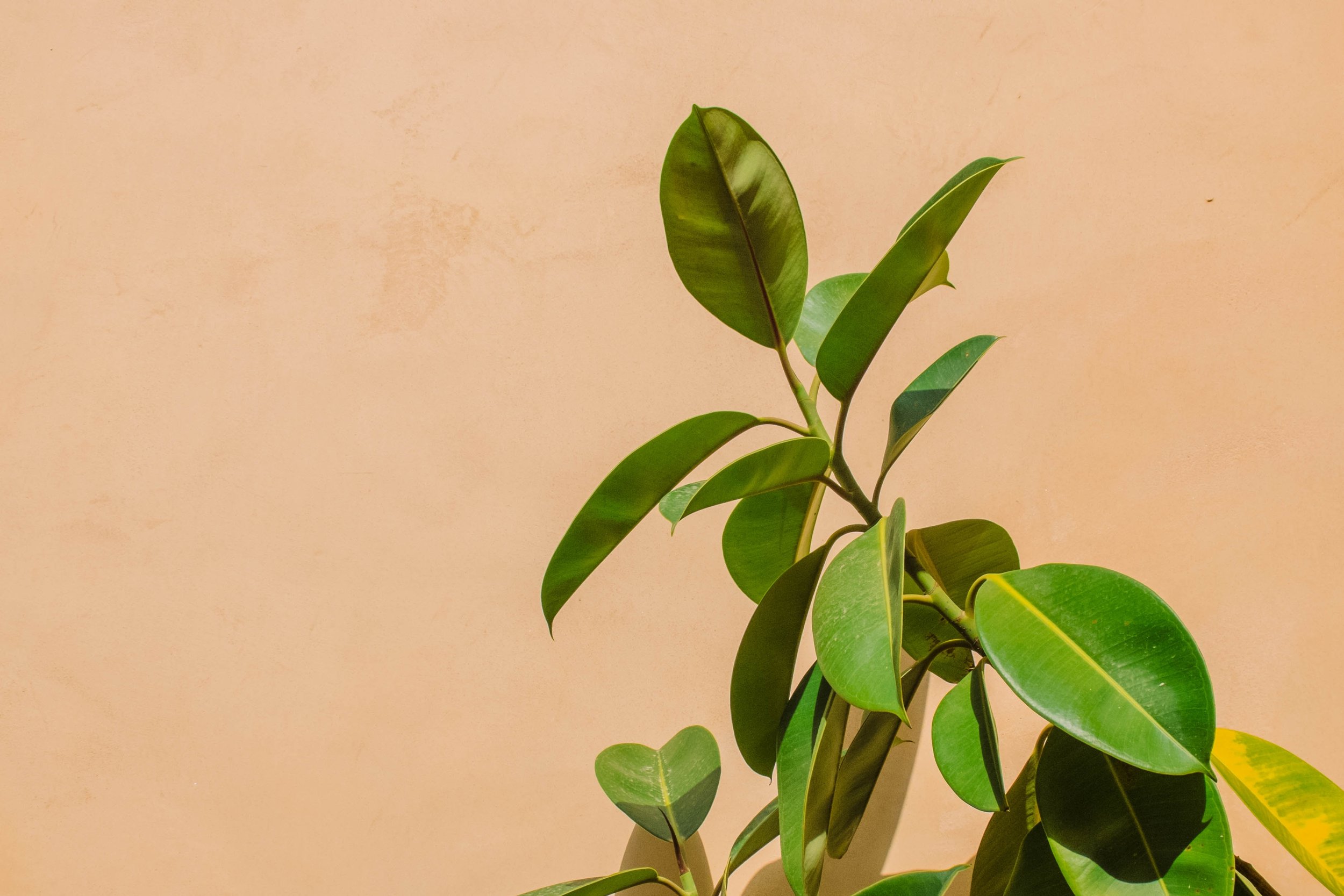How to keep your houseplants alive and kicking: 5 top tips
Includes a list of easy-to-maintain oxygenating plants
Photo by Annie Spratt on Unsplash
Houseplants are awesome. They make your home look like a jungle, they clean the air and boost your mood. However, they can also be a pain in the butt - they can die, droop or turn yellow if you don’t take good care of them – and nobody wants that. To celebrate Houseplant Week 2024, here are five top tips to help you keep your houseplants alive and kicking.
1. Water your plant according to its needs.
The number one killer of houseplants is overwatering. Or underwatering. Or both. Basically, the optimal balance of water is tricky - too much or too little water can cause your plant to go “kaput”. To avoid this, you need to water your plant according to its specific needs - different plants have different thirst levels, so it’s important to check the soil moisture before watering. A general rule of thumb is to water when the top inch of soil feels dry; however, some plants may need more or less frequent watering. You can also use a moisture meter to measure the water level in the soil. When you water your plant, make sure to use room-temperature water and water thoroughly until the excess water drains out of the bottom of the pot. Don’t let your plant sit in water as this can cause root rot, which is bad news.
2. Provide enough light for your plant.
Light is essential for photosynthesis - the process by which plants make their own food. Without enough light, your plant will not be able to grow and thrive. Most houseplants prefer bright, indirect light but some may tolerate low or high light conditions. You can use a light meter to measure the light intensity in your plant’s location or move your plant closer (or farther away) from a window to adjust the light exposure. You can also use artificial lights, such as fluorescent or LED bulbs, to supplement the natural light. However, avoid placing your plant near sources of heat, such as radiators or fireplaces, as this can dry out or scorch your plant – nobody likes a crispy plant.
Photo by Waldemar Mad on Unsplash
3. Fertilize your plant periodically.
Fertilizer provides nutrients your plant may not get from the soil. Most houseplants benefit from a balanced fertilizer that contains nitrogen, phosphorus, potassium, and micronutrients. You can use a liquid, granular or slow-release fertilizer and follow the label directions for how much and how often to apply. A good time to fertilize is during the spring and summer, when your plant is actively growing. However, don’t over fertilize your plant as this can burn the roots or cause salt buildup in the soil. You can also use organic fertilizers, such as compost, worm castings or coffee grounds to enrich the soil and feed your plant. Just don’t use your leftover pizza as fertilizer!
4. Prune your plant regularly.
Pruning helps to remove dead, diseased or damaged parts of your plant, and encourages new growth and shape. Pruning also helps to prevent your plant from becoming too large or leggy for its pot or space. You can use a sharp pair of scissors or pruning shears – just above a leaf node or a branch. You can also pinch off the tips of some plants to promote bushier growth. Pruning is best done in the fall or winter when your plant is dormant or slow-growing. However, don’t prune too much or too often as this can stress your plant or cause it to lose its natural form. And don’t give your plant a haircut, as tempting as it may be.
5. Repot your plant when necessary.
Repotting helps to refresh the soil, improve drainage and provide more space for your plant’s roots. You can tell if your plant needs repotting if the roots are growing out of the drainage holes, the soil is compacted or depleted or the plant is wilting or drooping. Moreover, you can use a pot that is one or two inches larger than the current one and fill it with fresh, well-drained potting mix. You can also add some perlite, vermiculite or pebbles to improve aeration and drainage. When you repot your plant, be gentle with the roots and try not to disturb them too much. You can also trim off any dead or damaged roots. After repotting, water your plant well and place it in a shady spot for a few days to help it adjust.
Photo by Robert Katzki on Unsplash
If you’re looking for a house plant to enact these tips, try one of these easy-to-maintain plants known for their oxygen-releasing goodness:
1. Snake Plant (Sansevieria trifasciata)
AKA the "Mother-in-law's Tongue" thrives on neglect. Water it occasionally - but seriously, it can handle your forgetfulness. Perfect for those who don't want a needy plant but still want to feel like a plant parent.
2. Spider Plant (Chlorophytum comosum)
The drama queen of the plant world - It'll let you know when it's thirsty with dramatic leaf drooping. However, don't worry - it bounces back like a champ after a sip. Ideal for those who appreciate a bit of plant theatrics.
3. Peace Lily (Spathiphyllum spp.)
The peacekeeper. It filters your air and blooms elegant white flowers - just water it when it starts looking a bit dramatic and you'll have a zen corner in no time. A drama-free diva.
4. Aloe Vera (Aloe barbadensis miller)
Your skincare routine's BFF. This succulent is low-maintenance but it won't mind if you brag about its gel and sun-loving personality. A green companion that soothes both your skin and your plant-parenting ego.
5. Rubber Plant (Ficus elastica)
The cool kid on the block. Tolerant of low light and inconsistent watering - just keep it away from drafts and tell your other plants not to be jealous of its glossy leaves. It's just born this way.
6. Areca Palm (Dypsis lutescens)
The tropical vibe you need. Loves bright, indirect light and a bit of humidity. Pretend you're on a beach while you care for it and you'll both be happy. An added bonus: is it's an excellent conversation starter about your non-existent beach vacation.
7. Boston Fern (Nephrolepis exaltata)
The OG air purifier. It loves moisture, so give it some humidity and occasional misting. Just beware of its high-maintenance fern feelings; it might pout if it gets too dry. But hey - it's worth it for those luscious fronds.
8. Golden Pothos (Epipremnum aureum)
The trailblazer. Puts up with low light, irregular watering and even forgetful neglect. It's the go-to for plant beginners - let it trail and spill over surfaces and it will forgive you for everything.
9. Gerbera Daisy (Gerbera jamesonii)
The cheerful one. It needs bright light but in return it rewards you with vibrant blooms. Show it off in a sunny spot and bask in its happy energy - just don't be surprised if it's more cheerful than you in the morning.
10. Bamboo Palm (Chamaedorea seifrizii)
The air-purifying tropical friend. Prefers bright, indirect light and is cool with moderate watering. Treat it like your plant sidekick and you'll have a green companion that can handle your indoor adventures with ease.
These plants are not only known for their air-purifying qualities but are also relatively low-maintenance, making them suitable for various indoor environments. By following some of our top tips, you can ensure that your plants will grow and flourish in your home. And if your home doesn’t have space for a house plant, we here at 9Trees have you covered. You can subscribe to our biodiversity fund or plant a tree with us!
Don’t forget to share this post with your friends and family who love houseplants. Happy Houseplant Week 2024. Keep it green!
By Akshay Gajria - Blog writer and conservationist at 9Trees



